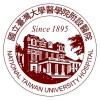
Human Mesenchymal Stromal Cells For Acute Respiratory Distress Syndrome (START)
Respiratory Distress SyndromeAdultThis was a Phase 2a, randomized, double-blind, placebo-controlled, multi-center trial to assess the safety and efficacy of a single dose of Allogeneic Bone Marrow-derived Human Mesenchymal Stromal Cells (hMSCs) infusion in patients with Acute Respiratory Distress Syndrome (ARDS).

Efficacy of Hydrocortisone in Treatment of Severe Sepsis/Septic Shock Patients With Acute Lung Injury/Acute...
Septic ShockSevere Sepsis2 moreSevere sepsis/septic shock is a serious condition associated with high mortality rate. Hydrocortisone has been recommended as a useful treatment to decrease mortality in hemodynamically unstable septic shock patients, not response to fluid and moderate dose of vasopressor. During the progression of severe sepsis/septic shock, multi-organ dysfunction can develop. Acute lung injury (ALI) and its more severe form, acute respiratory syndrome (ARDS) is one of the common organ dysfunction associated with septic shock. Information from a meta-analysis suggested that moderate dose of hydrocortisone may improve the ARDS patients' outcome. Whether hydrocortisone can effectively prevent disease progression and death in severe sepsis/septic shock patients who complicated with ALI/ARDS has not been proven.

Intrapleural Methylprednisolone Injection for Multiple Organ Failure With Acute Respiratory Distress...
Acute Respiratory Distress Syndrome (ARDS)Multiple Organ FailureAcute respiratory distress syndrome (ARDS) in combination with multi-organ dysfunction syndrome (MODS) is a life-threatening condition, particularly when treatment modalities such as extracorporeal membrane oxygenation (ECMO) and catecholamine administration have failed to treat the severe condition. In this study, the investigators report patients who responded to intrapleural steroid instillation (IPSI) while being unresponsive to conventional treatment (use of intravenous steroids, nitric oxide inhalation, high-frequency oscillatory ventilation, or ECMO) for treatment of critical illnesses such as ARDS in combination with MODS.

Phase III Randomized, Double-Blind, Placebo-Controlled Study of Antenatal Thyrotropin-Releasing...
Respiratory Distress SyndromeOBJECTIVES: I. Evaluate the effect of thyrotropin-releasing hormone (TRH) on the severity of initial lung disease and occurrence of chronic lung disease when given antenatally to women with threatened premature delivery. II. Evaluate possible mechanisms for the effects of TRH on the severity and incidence of chronic lung disease. III. Investigate whether a deficiency in endogenous cortisol and/or thyroid hormones after birth influences the severity of lung disease and the development of chronic lung disease.

Study of Antenatal Thyrotropin-Releasing Hormone in Women in Premature Labor to Prevent Lung Disease...
Respiratory Distress SyndromeOBJECTIVES: I. Assess the efficacy and safety of antenatal administration of thyrotropin-releasing hormone to women in premature labor to improve pulmonary outcomes in preterm infants.

ARDSnet Protocol vs. Open Lung Approach in ARDS
Respiratory Distress SyndromeAdultMany patients with Acute Respiratory Distress Syndrome or ARDS need breathing support that is provided by a machine called a ventilator or respirator. The purpose of this study is to find out if a new method of setting the ventilator for patients with severe ARDS is better than the standard, commonly used way of setting the ventilator.

Protective Ventilation With Carbon Dioxide (CO2) -Removal Technique in Patients With Adult Respiratory...
Adult Respiratory Distress Syndrome30% of ARDS patients ventilated according to NIH protocol presents morphological (CT) and functional (Stress Index>1) conditions of hyperinflation even with Plateau pressure (Pplat) < 30 cmH2O; values of Pplat lower than 26 cmH2O were associated with more a condition of more protective ventilation. In patients at risk of hyperinflation, use of alternative techniques such as CO2-removal my allow the reduction of Tidal Volume (Vt) and Pplat.

Non-Invasive Positive Pressure Ventilation and Adult Respiratory Distress Syndrome (ARDS)
Acute Respiratory Distress SyndromeBackground and objective: To determine the efficacy of non-invasive positive pressure ventilation (NPPV) and its effects upon intubation rate and mortality in ARDS.

Safety Study of Feeding With Ginger Extract in Acute Respiratory Distress Syndrome
Acute Respiratory Distress SyndromeAn enteral diet supplemented with ginger extract in acute respiratory distress syndrome (ARDS) patients may be beneficial for gas exchange and could decrease duration of mechanical ventilation and length of stay in intensive care unit (ICU).

Nasal High Frequency Ventilation in Preterm Infants: A Pilot Study
Infant Respiratory Distress SyndromeRespiratory Insufficiency1 moreThe purpose of this study is to test whether application of high frequency ventilation through a nasal tube can lower blood carbon dioxide levels in stable preterm infants.
